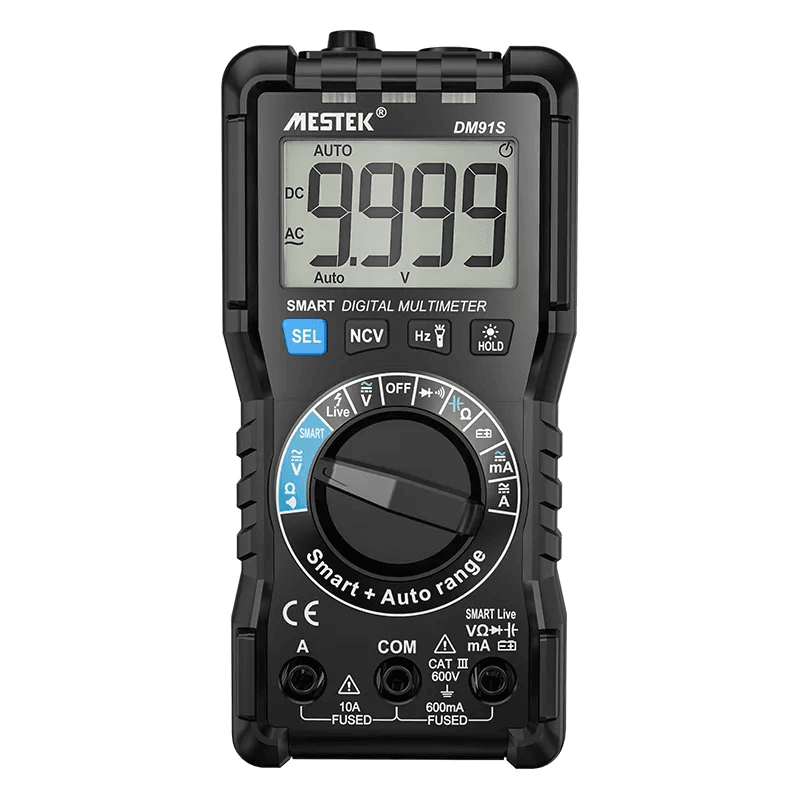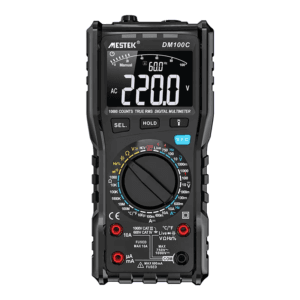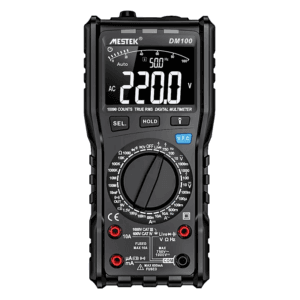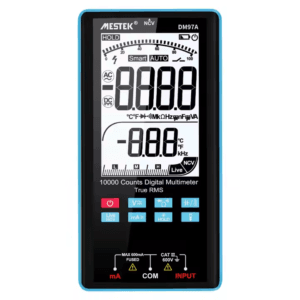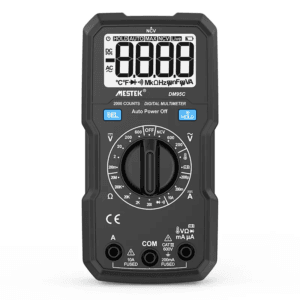DM91S smart multimeter has two measurement modes, smart/auto, and is designed for efficient and accurate daily measurements. The device supports AC/DC voltage and current tests up to 600V and 10A, and is equipped with a 10,000-digit display. It features non-contact voltage detection, continuity and diode automatic check functions, and live/neutral identification. DM91S also features AC frequency measurement, data hold, and fuse blown alarm, providing smart functions in a compact form factor. It complies with EN61010-2-033, CAT III 600V safety standards.
Functions
| DC Voltage | 10V/100V/600V | ±(0.5%+3) |
| AC Voltage | 10V/100V/600V | ±(0.8%+3) |
| DC Current | 600mA/10A | ±(1.5%+2) |
| AC Current | 600mA/10A | ±(3.0%+2) |
| Capacitance | 100nF/1μF/10μF/100μF/1mF/10mF | ±(3.5%+15) |
| Resistance | 1000Ω/10kΩ/100kΩ/1MΩ/10MΩ/60MΩ | ±1.0%+2.0) |
| Live | Live Line or Neutral Line Distinguish with one Probe | |
| Continuity/Diode Check | Auto check Continuity or Diode | |
| Non-contact ACValtage Detection | Yes | |
| Display | 10000 counts | |
| Manual/Auto/Smart | Manual/Auto | |
| Auto Power off | √ | |
| Data Hold | √ | |
| Live Line Distinguish | √ | |
| AC Voltage Frequency | √ | |
| Frequency Testing by AC | √ | |
| Fuse Burn Alarm | √ | |
| Batteries | 2*1.5V AAA | |
| Size | 150*70*50(mm) | |
| Weight | About 195g | |
| Safety Level | EN61010-2-033,CAT Ⅲ 600V |
Factory Showcase
Mestek achieves high standards and high consistency in product inspection and calibration through precise machinery and a clean environment.
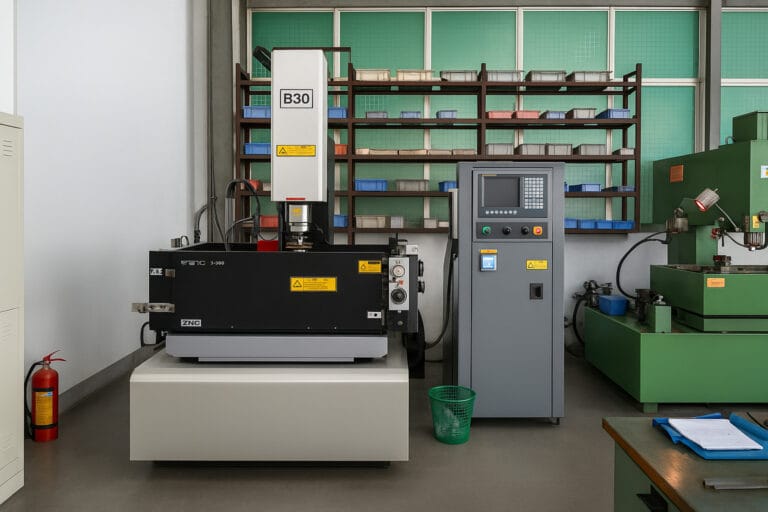
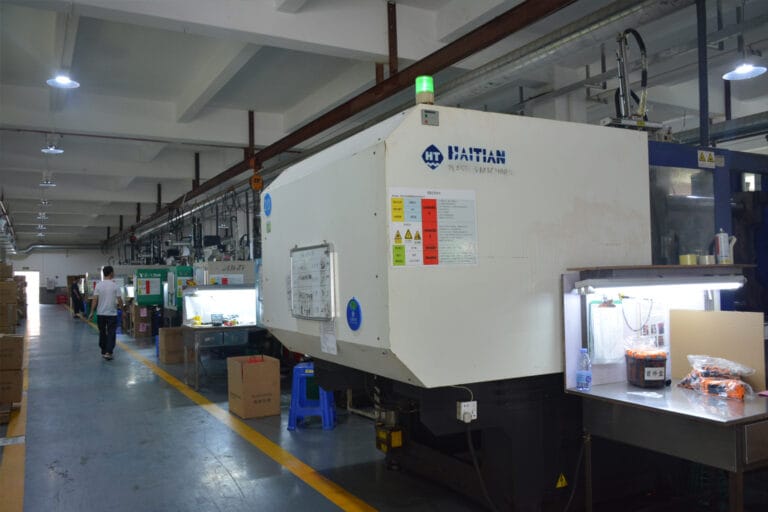


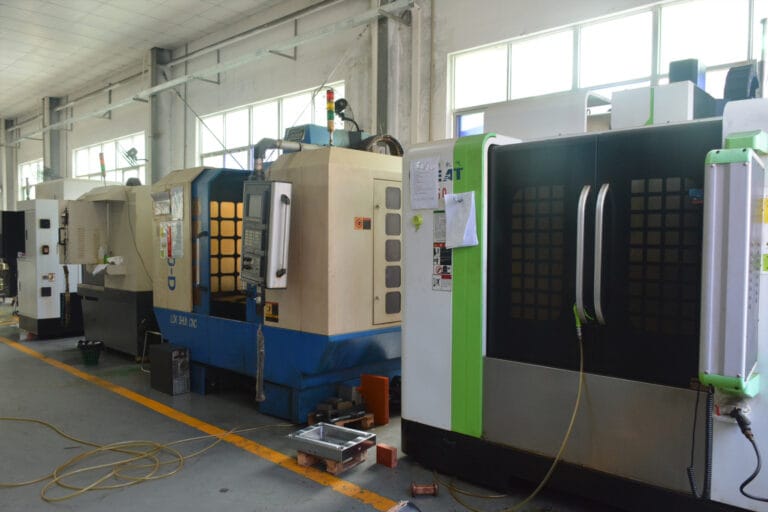
FREQUENTLY ASKED QUESTIONS
Why does my multimeter show “OL” or “1”?
When your multimeter displays “OL” (Over Limit) or “1”, it usually means the measurement exceeds the selected range or the circuit is open. For example, if you’re measuring resistance and the probes aren’t touching anything (or measuring an open circuit), your multimeter will show “OL” or “1” to indicate that the value is out of range. Switching to a higher range or reconnecting the probes usually resolves the issue.
How often should I calibrate my multimeter?
A multimeter should generally be calibrated once a year to ensure accuracy, especially in professional or industrial environments. However, if you use your multimeter occasionally for basic home electrical tasks, you may calibrate it less frequently. Always refer to the manufacturer’s guidelines, and if you notice inconsistent readings, get it calibrated sooner.
Can a multimeter measure temperature?
Yes, many digital multimeters come with a built-in temperature measurement function. These models typically include a K-type thermocouple probe that allows you to measure temperatures in Celsius or Fahrenheit. Check your multimeter’s specifications to see if it supports this feature. It’s especially useful for HVAC technicians or electronics troubleshooting.
What does "True RMS" mean and do I need it?
“True RMS” (Root Mean Square) is a technology in advanced digital multimeters that allows accurate measurement of AC signals, even when they are not pure sine waves. If you’re working with variable frequency drives, motors, or other equipment generating distorted waveforms, a True RMS multimeter provides more reliable readings than an average-responding one. For professional and industrial use, True RMS is highly recommended.
Can I test batteries with a multimeter?
Yes, a multimeter can test batteries by measuring their DC voltage. Simply set the multimeter to DC voltage mode, connect the red probe to the battery’s positive terminal and the black probe to the negative terminal. For example, a 1.5V AA battery should read close to 1.5V when fully charged. If the voltage is significantly lower, it’s time to replace the battery.
What does the “auto-ranging” feature do?
The auto-ranging feature in a multimeter automatically selects the correct range for the measurement you’re performing. This means you don’t need to manually set the voltage, current, or resistance range—it simplifies operation, reduces errors, and speeds up testing. It’s a must-have for beginners and also convenient for professionals handling diverse measurement tasks.
